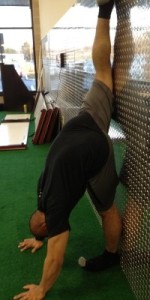As much as I’m interested in stretching and flexibility, I can honestly say I haven’t performed a static stretch in over 3 years – and I’m better for it.

As a society, I am under the belief that we overstretch our hamstrings and understretch our glutes and quads. Despite such a juxtaposition, I think people misinterpret what it means to stretch, and to create flexibility, and what it means to create better “positional awareness” – either through alignment or better patterned breathing.
Below are a few articles and blogposts that discuss the various myths and mistakes involved with stretching.
Dispelling the Stretching Myths – by Dr. Andreo Spina on KevinNeeld.com
In this post, Dr. Andreo Spina presents a guest blog post on the different myths involved with stretching and what we can take away from the literature. Find below an interesting quote from the article.
In other words, the pursuit of flexibility in the absence of strengthening the newly acquired range does nothing more than produce “useless flexibility.” Only those who are able to maintain control of their bodies, even when in extreme ranges, are able to benefit from their new found ‘elasticity.’
And another quote…
Can you have too much flexibility?
Yes! Despite the recent upsurge in the practice of Yoga amongst athletes, extreme flexibility should not be the goal of every athlete. Research suggests that you only need a small flexibility reserve above the demands of your particular sport. Further flexibility may actually hinder athletic technique by ‘dispersing’ the acting forces on the body. For example, a very flexible spine may cause a loss of force along the kinetic chain when jumping, or performing a shot put. Increasing muscle length may also alter the length where it is able to generate the most force (usually midrange), which is not necessarily a good thing for sports that require a lot of power in a small range of motion.
15 Static Stretching Mistakes – by Eric Cressey
This blog details the most common static stretching mistakes that Eric has observed, what to do if you are hypermobile, and the corrections he would favor instead.
When you take someone who is really lax and implement aggressive static stretching, it’s on par with having someone with a headache bang his/her head against a wall. It makes things worse.
What’s most interesting is the population that Cressey works with, which is namely baseball players and pitchers. The degree of laxity (along with phase of season and playing time) that these athletes present with will largely determine how he handles their dynamic warm-ups, exercise programs, and whether or not they stretch, among many other factors.
Although not related directly to stretching, if we are too flexible, we often need more stability, rather than even more mobility in our joints to get rid of that “tightness” feeling. This has a larger part to do with the principles of The Joint By Joint Approach versus the thought process that everything in your body needs to feel “loose” – something that will present itself if you are already hypermobile.
Keep it funky.
MA
